CANADA TACKLES WORKPLACE CULTURE
LGBTQ PERSONNEL REPORT HIGHER LEVELS OF DISSATISFACTION
BY LAURIE VANDESCHOOT AND NINA VAUGHAN
Over the last few years, the Canadian Interagency Forest Fire Centre (CIFFC) and its member agencies have proactively begun discussions to address culture change in the Canadian wildland fire community in response to some distinct, yet compounding issues around diversity, inclusion, and respect in the wildfire culture.
To that end, an equity, diversity, and inclusion (EDI) survey was conducted in the second half of 2020 to better understand the experiences of people deployed by CIFFC in recent years and to assess the deployed members’ experiences and perceptions about diversity, inclusion, and respect during CIFFC deployments.
CIFFC is owned and operated by the federal, provincial and territorial wildland fire management agencies and co-ordinates resource sharing, mutual aid, and information sharing.
CIFFC executive director Kim Connors said the agency is committed to ensuring everyone who is deployed is safe – physically and psychologically.
“We know that not everyone is experiencing deployments in the same way,” Connors said. “Let me be unequivocal: CIFFC and its member agencies find no place for harassment, bullying, or other forms of disrespectful workplace behaviors by deployed personnel or contractors.
“We have been working with our CIFFC team and our consultants to better understand the issues and develop a plan for moving CIFFC and all deployed members to a more inclusive and safe working environment.”
The survey was open for two months, from Aug. 11 through Oct 9, 2020, to allow for the largest number of responses from deployed personnel. Of the 8,092 deployments made through CIFFC in the last three years, 530 individual members responded to the survey, with 503 completing the entire survey. This response rate is statistically significant with a 99 per cent confidence rate and five per cent margin of error, suggesting that the findings can be assumed to represent the entire population of deployed members.
EMPLOYEE INFORMATION
Understanding the current experiences of overrepresented and underrepresented groups can assist with the development of future strategies and can provide a baseline for measuring success.
The breakdown of survey participants provided a good cross section of employees with a fairly even split among employee demographics.

The initial demographic information acquired was valuable in understanding who goes on a CIFFC deployment, and what makes them unique. The data allowed for additional analysis, and helped to assess what, if any, groups were experiencing workplace issues with greater frequency than others. The collected data can be used as a starting point for future initiatives and a benchmark for measuring the outcomes of those efforts.
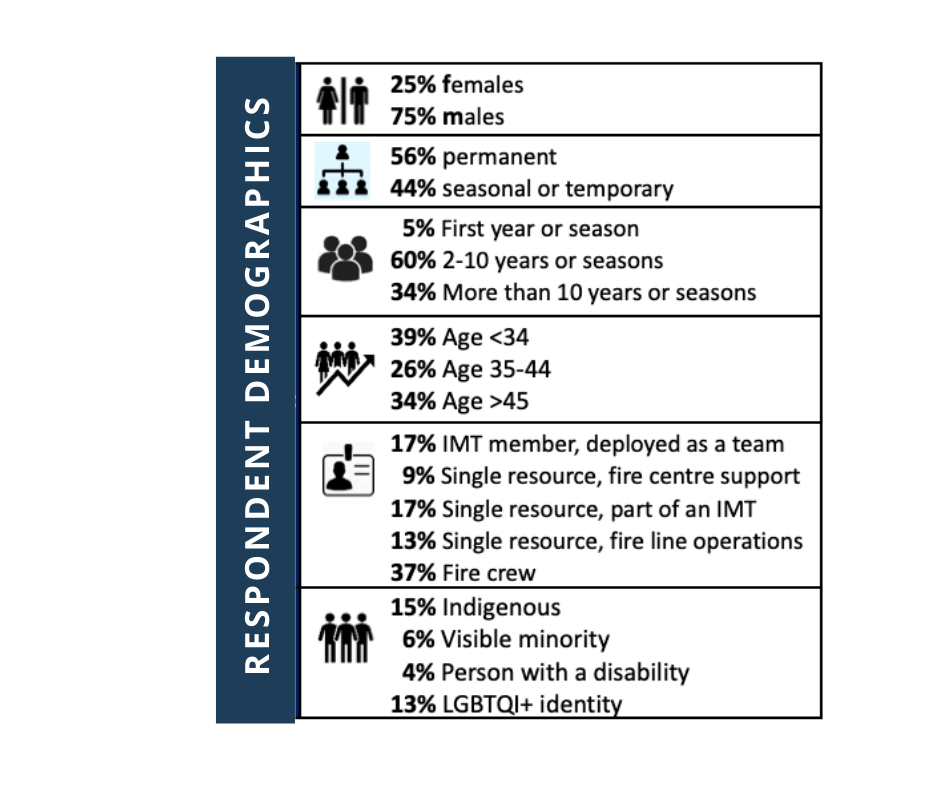
WORKPLACE CULTURE
Recognizing which workplace behaviours are tolerated, accepted, and rewarded shines a light onto understanding the culture of an organization.
The survey results revealed an interesting dichotomy in responses. While respondents felt very positive about their deployment experiences, they also revealed some areas that require attention related to workplace culture and workplace behaviors.
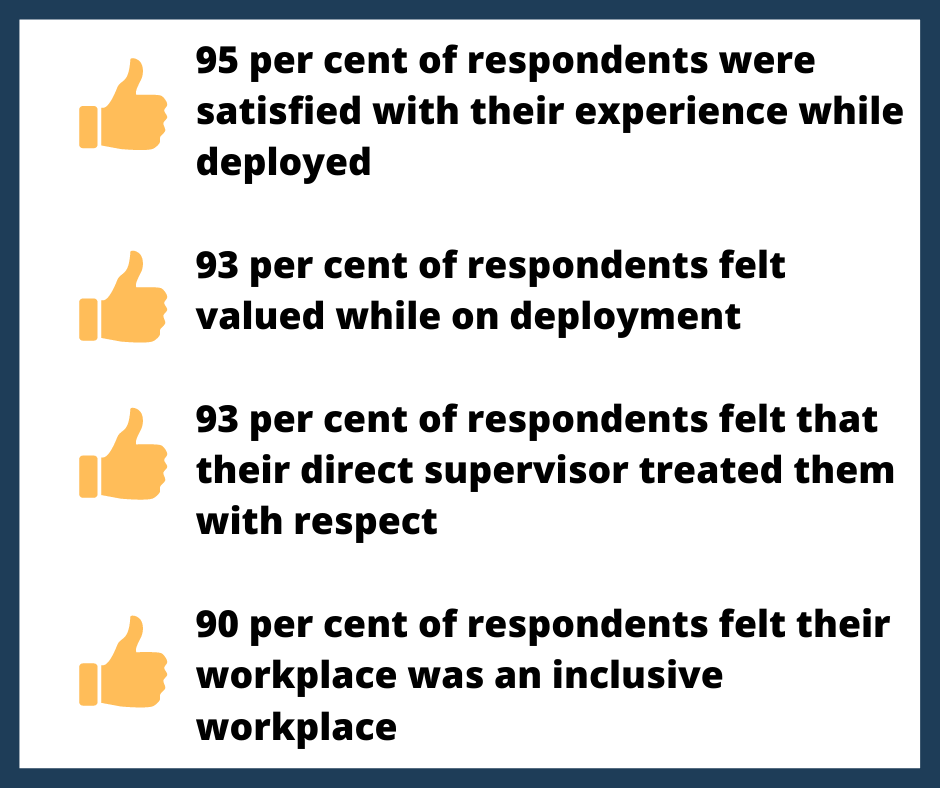
Questions about workplace culture also revealed some areas worth examining further. For example, 27 per cent of all respondents disagreed that they had been properly briefed by the receiving agency on how to report workplace concerns while on deployment. In addition, 10 per cent did not feel they could discuss workplace issues with their direct supervisors, and nine per cent did not feel that humour was used appropriately in the workplace.
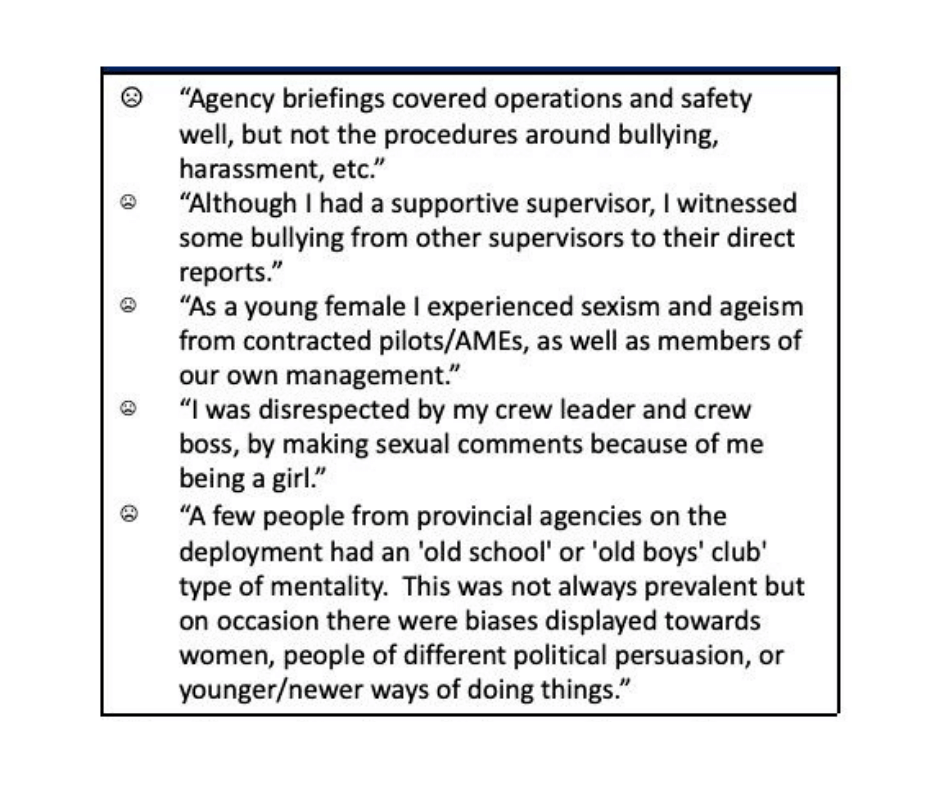
Overall, members of minority groups reported higher levels of disagreement with all the culture-related questions, particularly LGBTQ respondents, who reported the highest levels of disagreement for all groups. Of female respondents, 16 per cent disagreed with the statement regarding the use of humour and 17 per cent disagreed that their deployment was an inclusive workplace.
WORKPLACE ENVIRONMENT
Data in the workplace environment section is helpful to identify what the greatest number of negative experiences are, where they are occurring, and how frequently they are occurring, so that targeted approaches can be taken.
Questions regarding the workplace environment on deployments revealed some concerning results. First, there appears to be very high levels of intentional incivility, harassment, and discrimination being experienced and witnessed. In addition, there are concerning levels of workplace violence and hazing occurring, and finally, more than two-thirds of respondents did not report the incident they had experienced or witnessed. Of all respondents, 27 per cent experienced and 35 per cent witnessed a disrespectful workplace incident.
In other surveys, researchers have found that when asked a series of questions about types of disrespectful behavior, the number of respondents who experienced an incident decreases as the seriousness of the incident increases. That is not true however, in these survey results.
According to the survey results, the key reasons for not reporting the incident included fear of retribution, fear of being ostracized, and a belief that nothing would have been done about it. The majority of incidents reportedly occur either on the fire line or in camp, so an opportunity exists for a targeted response to these issues in those locations.
SUMMARY AND RECOMMENDATIONS
Overall, the survey provided a rich source of data that allows for a strategic approach to advancing the issues identified through the development of an EDI framework. That framework will assist in advancing CIFFC’s desire to integrate EDI into the Canadian wildland fire community, and enhance the deployment experience, making it a safe, diverse, and inclusive experience for all involved.
The research identified some key areas for attention as well as strengths that can be leveraged moving forward. Overall, the results indicate that deployed members love their jobs, and like being deployed through CIFFC, but they are willing to put up with high levels of disrespectful workplace behaviours to do so.
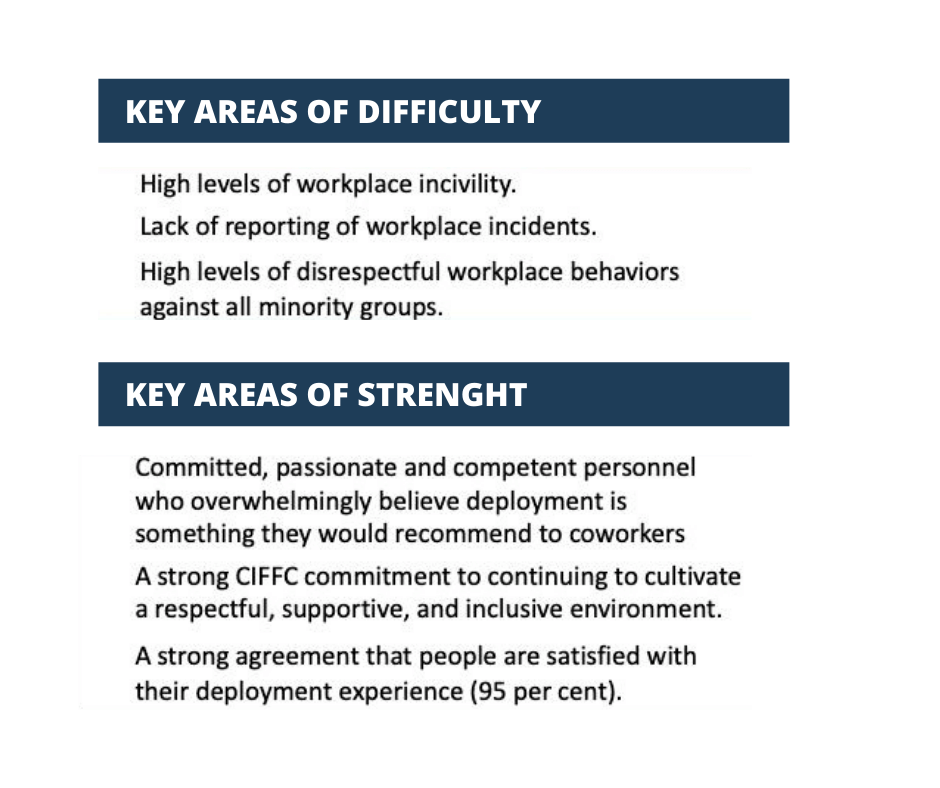
NEXT STEPS
The intended outcomes for this project were:
- to measure perceptions of deployed personnel and discover the strengths and weaknesses of the culture
- to raise awareness of EDI issues
- to provide a baseline against which to measure future progress
- to act as a leadership tool to help promote EDI culture transformation.
While these outcomes have been achieved, this component of the project should be the first step of a four-phase approach to CIFFC achieving its desired impact of a culture transformation within the Canadian wildland fire community.
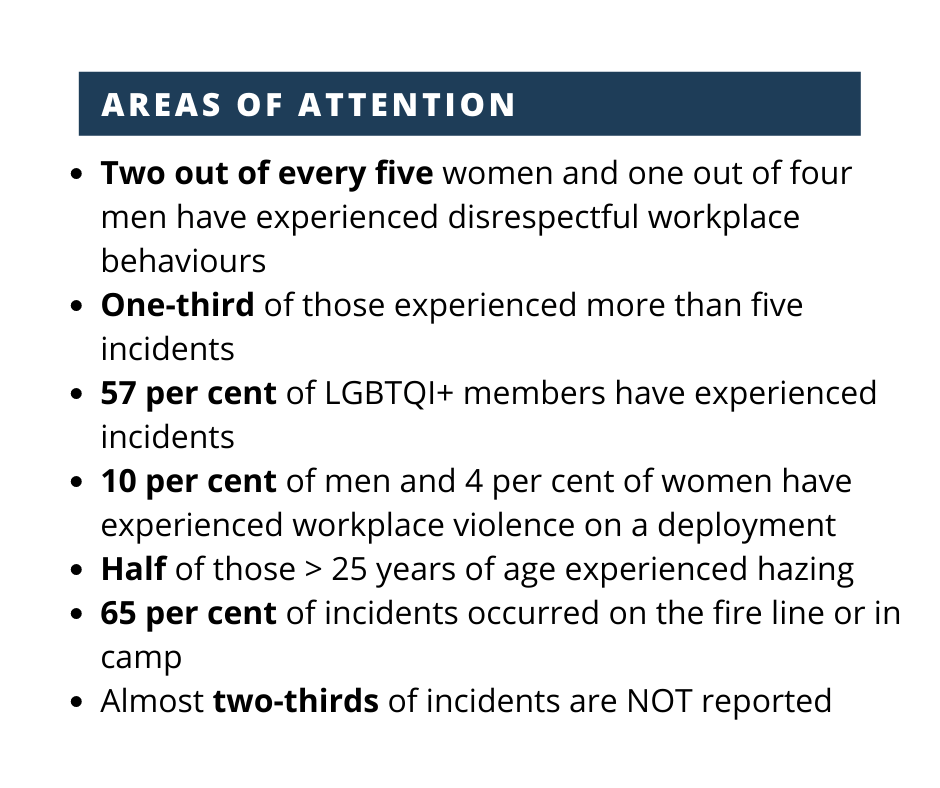
The next component of this project, which was approved in 2020, will complete the research phase by conducting focus groups and an audit of CIFFC policies and ancillary documents. At the completion of component two, CIFFC will receive a full respectful-workplace culture assessment report that integrates all the findings from the first two components. This report will be an objective, detailed analysis of CIFFC’s EDI environment and of the deployment experience for the Canadian wildland fire community.
The final two components of the project should include component three, the development of a national strategy focused on EDI through the development of a CIFFC-specific EDI framework. That framework would act as a guide for CIFFC and a best practices recommendation for partner agencies.
Finally, component four would see the identification of specific policies and practices to support the psychological health and safety of deployed members and can be seen as the implementation phase of this project.
ABOUT THE AUTHORS
Laurie VandeSchoot is deputy chief with Calgary Fire Department and president of consultancy Satya Inc.
Nina Vaughan had a 29-year career in policing and is president of Vaughan Consulting in Calgary.
